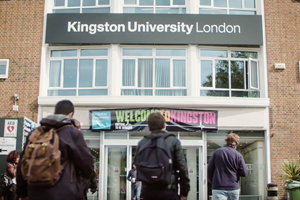Sheffield University
Countries
Visitors
Visa Granted
Subjects
Sheffield University – Description
The University of Sheffield (informally Sheffield University) is a public research university in Sheffield, South Yorkshire, England. It received its royal charter in 1905 as successor to the University College of Sheffield, which was established in 1897 by the merger of Sheffield Medical School (founded in 1828), Firth College (1879) and Sheffield Technical School (1884).
Sheffield is a multi-campus university predominantly over two campus areas: the Western Bank and the St George’s. The university is organised into five academic faculties composed of multiple departments. It had 20,005 undergraduate and 8,710 postgraduate students in 2016/17. The annual income of the institution for 2017–18 was £678.3 million of which £196.8 million was from research grants and contracts, with an expenditure of £627.8 million. Sheffield ranks among the top 10 of UK universities for research grant funding, and it has become number one in the UK for income and investment in engineering research according to new data published by the Higher Education Statistics Agency (HESA).
Sheffield was placed 78th worldwide and 12th in the UK according to QS World University Rankings and 106th worldwide and 12th in the UK according to Times Higher Education World University Rankings. It was also ranked 12th in the UK amongst multi-faculty institutions for the quality (GPA) of its research and for its Research Power in the 2014 Research Excellence Framework. In 2011, Sheffield was named ‘University of the Year’ in the Times Higher Education awards. The Times Higher Education Student Experience Survey 2014 ranked the University of Sheffield 1st for student experience, social life, university facilities and accommodation, among other categories.
It is one of the original red brick universities, a member of the Russell Group of research-intensive universities, the Worldwide Universities Network, the N8 Group of the eight most research intensive universities in Northern England and the White Rose University Consortium. There are eight Nobel laureates affiliated with Sheffield and six of them are the alumni or former long-term staff of the university.

campus
St George’s Campus
To the east lies St George’s Campus, named after St George’s Church (now a lecture theatre and postgraduate residence). The campus is centred on Mappin Street, the location of the Faculty of Engineering (partly housed in the Grade II-listed Mappin Building) and the Department of Journalism Studies, Department of Economics and Department of Computer Science. The University also maintains the Turner Museum of Glass in this area. The University has converted the listed Victorian Jessop Hospital for Women into the new home of the Department of Music.
The formerly grade II listed Edwardian wing of the Jessop Hospital was replaced by a new £81 million building for the Faculty of Engineering which opened in September 2015, named The Diamond. It houses lecture theatres, laboratories, workrooms and other facilities for the teaching of engineering.
West of the main campus
Further west lies Weston Park, the Weston Park Museum, the Harold Cantor Gallery, sports facilities in the Crookesmoor area, and the Faculty of Medicine, Dentistry and Health around the Royal Hallamshire Hospital (although these subjects are taught in the city’s extensive teaching hospitals under the Sheffield Teaching Hospitals NHS Foundation Trust, and throughout South Yorkshire and North East Lincolnshire). It is in this area that the new £12 million Sheffield Institute
for Translational Neuroscience (SITraN), opened by Her Majesty Queen Elizabeth II in November 2010, is located.
Libraries and museums
The University has currently five libraries: the Information Commons, Western Bank Library, Health Sciences Libraries (Royal Hallamshire Hospital and Northern General Hospital), and The Diamond. The University of Sheffield Library is a member of Research Libraries UK.
The Western Bank Library has an Exhibition Gallery. The Gallery space enables collections from the University Library and the National Fairground Archive to be displayed in controlled conditions.
The Alfred Denny Museum is a museum operated by the University. It was established in 1905, and was located in Firth Court then moved to Alfred Denny Building. The Museum has specimens from all major phyla, and two letters written from Charles Darwin to Henry Denny. Many of the specimens have been collected since the 1900s, but much of the information about the collection was lost during the Second World War.
Sheffield University Course List
ELIGIBILITY CRITERIA IN GENERAL

COUNTRIES


